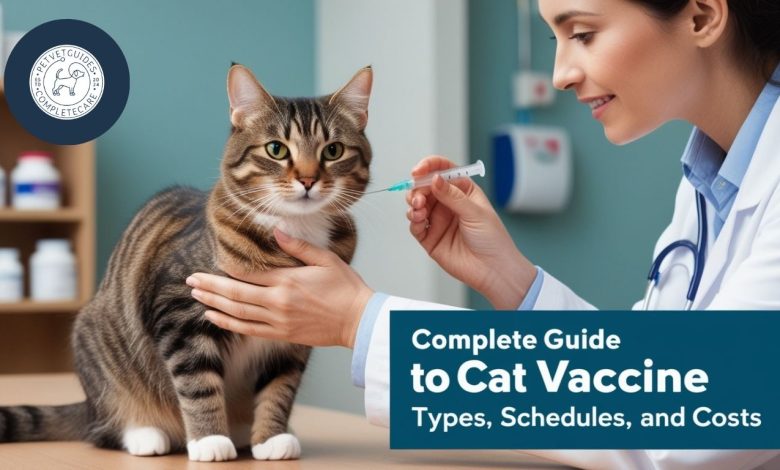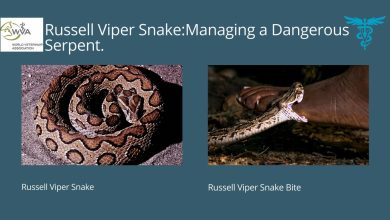Complete Guide to Cat Vaccine: Types, Schedules, and Costs

Introduction to Cat Vaccine
Vaccination is a crucial aspect of cat healthcare, ensuring your feline friend remains protected against various infectious diseases. Regular vaccination not only helps in preventing illness but also in controlling the spread of diseases among the cat population. Understanding the types of Cat vaccine, the appropriate age for administration, and the specific diseases they prevent is essential for every cat owner.
Table of Contents
Types of Cat Vaccine
Cat vaccine is broadly classified into core and non-core vaccines. Core vaccines are essential for all cats, while non-core vaccines are recommended based on the cat’s lifestyle and exposure risk.
Core Cat Vaccine
1.Feline Herpesvirus (FHV-1)
- Age for Administration: First dose at 6-8 weeks, followed by booster doses every 3-4 weeks until 16-20 weeks of age. Annual booster shots are recommended.
- Symptoms Indicating Need: Sneezing, nasal discharge, conjunctivitis.
- Disease Prevented: Feline viral rhinotracheitis, a severe upper respiratory infection.
- Administration Area: Subcutaneous injection, typically in the right forelimb.
- Post-Vaccine Reactions: Mild fever, lethargy, and swelling at the injection site.
- Cost: Varies from BDT 500 to BDT 1,500 per dose.
2.Feline Calicivirus (FCV)
- Age for Administration: First dose at 6-8 weeks, with boosters every 3-4 weeks until 16-20 weeks. Annual booster shots are recommended.
- Symptoms Indicating Need: Mouth ulcers, drooling, fever.
- Disease Prevented: Calicivirus infection, causing respiratory illness and oral disease.
- Administration Area: Subcutaneous injection, typically in the right forelimb.
- Post-Vaccine Reactions: Swelling at the injection site, mild fever, lethargy.
- Cost: Varies from BDT 500 to BDT 1,500 per dose.
3.Feline Panleukopenia (FPV)
- Age for Administration: First dose at 6-8 weeks, with boosters every 3-4 weeks until 16-20 weeks. Annual booster shots are recommended.
- Symptoms Indicating Need: Vomiting, diarrhea, severe dehydration.
- Disease Prevented: Feline distemper, a highly contagious and often fatal viral disease.
- Administration Area: Subcutaneous injection, typically in the right forelimb.
- Post-Vaccine Reactions: Mild fever, lethargy, and occasional vomiting.
- Cost: Varies from BDT 500 to BDT 1,500 per dose.
4.Rabies
- Age for Administration: First dose at 12-16 weeks, followed by annual booster shots.
- Symptoms Indicating Need: Aggression, excessive drooling, paralysis (note: rabies symptoms appear after infection; vaccination is preventive).
- Disease Prevented: Rabies, a fatal viral disease affecting the nervous system.
- Administration Area: Subcutaneous or intramuscular injection, typically in the right hind leg.
- Post-Vaccine Reactions: Swelling at the injection site, mild fever, lethargy.
- Cost: Varies from BDT 500 to BDT 2,000 per dose.
Non-Core Cat Vaccine
5.Feline Leukemia Virus (FeLV)
- Age for Administration: First dose at 8-12 weeks, with a booster 3-4 weeks later. Annual boosters are recommended for at-risk cats.
- Symptoms Indicating Need: Weight loss, persistent fever, lethargy.
- Disease Prevented: Feline leukemia, a viral infection that can lead to cancer and immune suppression.
- Administration Area: Subcutaneous injection, typically in the left hind leg.
- Post-Vaccine Reactions: Swelling at the injection site, mild fever, lethargy.
- Cost: Varies from BDT 1,000 to BDT 2,500 per dose.
6.Feline Immunodeficiency Virus (FIV)
- Age for Administration: First dose at 8 weeks, with boosters at 12 and 16 weeks. Annual boosters are recommended.
- Symptoms Indicating Need: Chronic infections, weight loss, fever.
- Disease Prevented: FIV, a viral infection causing immune deficiency.
- Administration Area: Subcutaneous injection, typically in the left hind leg.
- Post-Vaccine Reactions: Swelling at the injection site, mild fever, lethargy.
- Cost: Varies from BDT 1,500 to BDT 3,000 per dose.
7.Chlamydia Felis
- Age for Administration: First dose at 9 weeks, with a booster at 12 weeks. Annual boosters are recommended.
- Symptoms Indicating Need: Conjunctivitis, sneezing, nasal discharge.
- Disease Prevented: Chlamydia, a bacterial infection affecting the eyes and respiratory tract.
- Administration Area: Subcutaneous injection, typically in the left forelimb.
- Post-Vaccine Reactions: Swelling at the injection site, mild fever, lethargy.
- Cost: Varies from BDT 800 to BDT 1,500 per dose.
Why Cat Vaccine is Essential
Vaccination is critical for preventing severe and often fatal diseases in cats. It not only protects individual cats but also helps in controlling the spread of infectious diseases within the feline population. Vaccines stimulate the immune system to recognize and fight specific pathogens, providing long-term immunity.
Best Homemade Cat Food List : Click Now
Post-Vaccination Care and Potential Reactions
After vaccination, monitor your cat for any adverse reactions. Common reactions include mild fever, lethargy, and swelling at the injection site, which typically resolve within a few days. In rare cases, cats may experience allergic reactions such as difficulty breathing, vomiting, or swelling of the face. If any severe reactions occur, seek veterinary care immediately.
Cost of Vaccines by Company
The cost of cat vaccine can vary significantly based on the manufacturer and the region. It’s important to consult with your veterinarian to determine the most appropriate and cost-effective vaccination schedule for your cat.
- Zoetis: Offers a range of vaccines with prices varying from BDT 500 to BDT 3,000 per dose.
- Merck Animal Health: Provides vaccines with prices ranging from BDT 500 to BDT 2,500 per dose.
- Boehringer Ingelheim: Known for high-quality vaccines, with prices ranging from BDT 600 to BDT 2,500 per dose.
Conclusion
Ensuring your cat receives timely vaccinations is crucial for their health and well-being. By understanding the types of vaccines, the appropriate age for administration, and the diseases they prevent, you can make informed decisions to keep your feline friend healthy. For more detailed information on cat healthcare, visit Pet Vet Guides.



One Comment